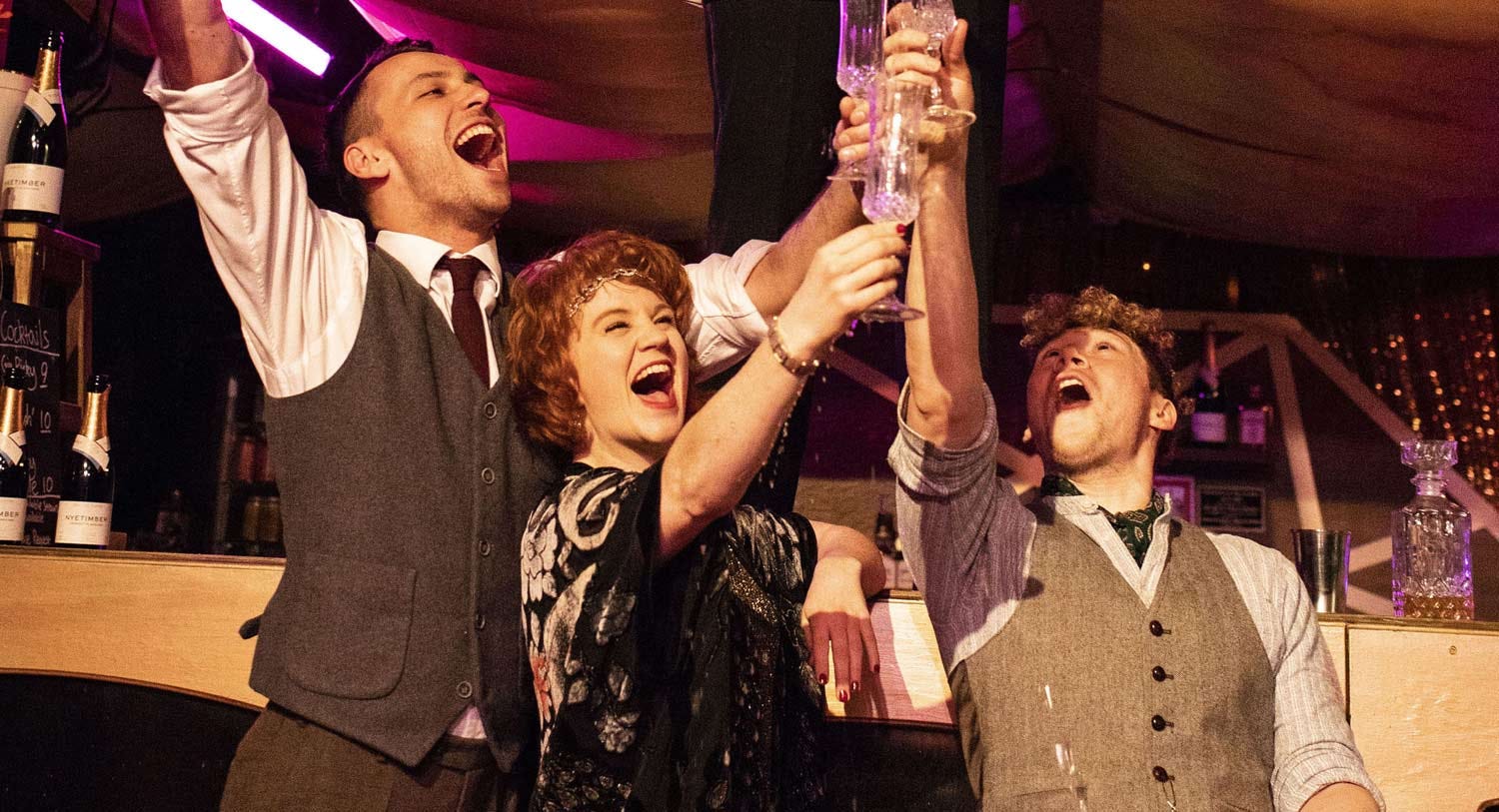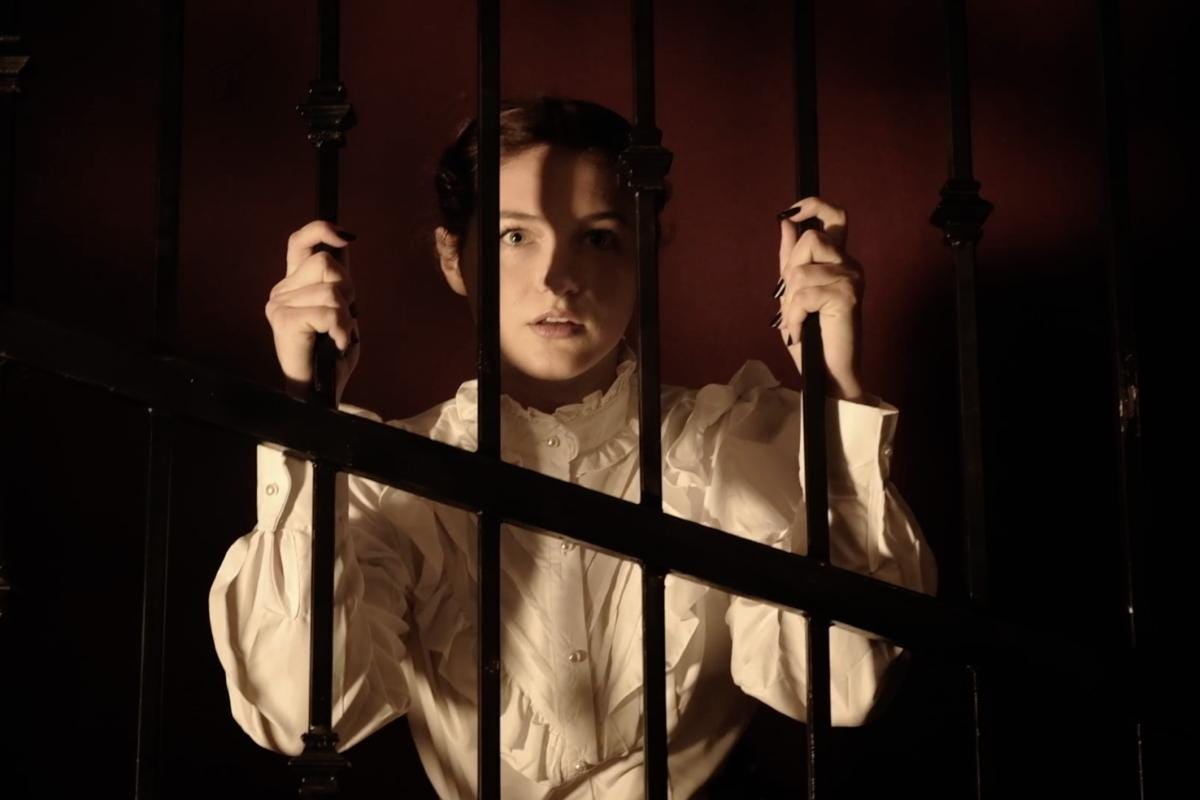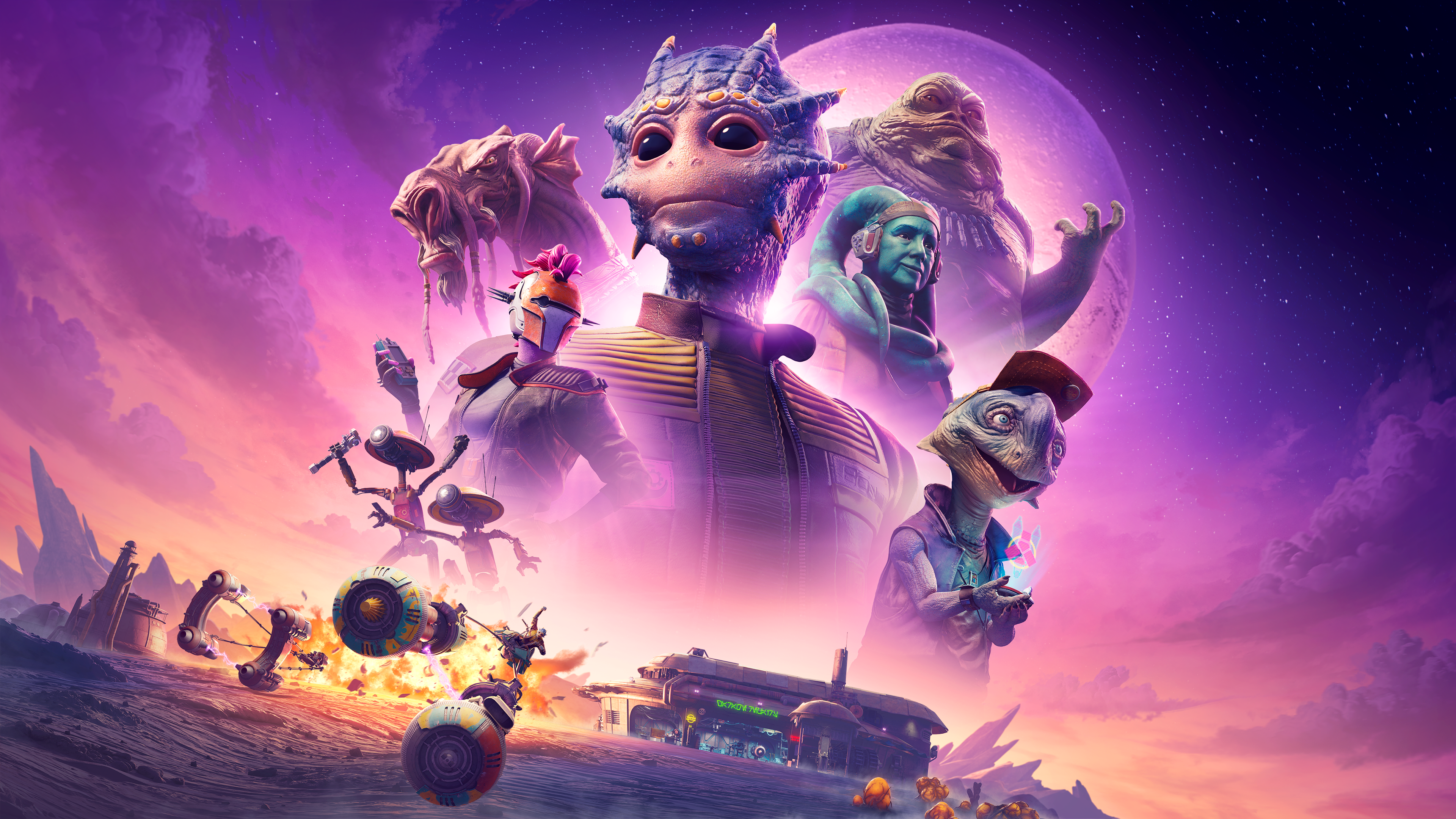
Audiences attending the immersvie Great Gatsby are invited to put on their best dancing shoes and dress up to the nines; they arrive at Gatsy’s “drugstore” where they’ll have the ability to interact with various characters from the classic novel and wander freely during the party, entering secret rooms and following performers. This hit show has been running for over a thousand performances, first in London and now newly opened in Brussels.
But what you may not know is that Gatsby is also one of the few “sandbox” or “open world” productions that has taken extra steps to ensure the availability of sign language interpreted and audio described performances, as well as offering discounted tickets for attendees and their essential companions, and is looking towards making other accommodations for patrons with specific requirements.
We spoke to Gatsby site manager Golfo Migos and audio describer Jane Ensell over email about the ongoing initiatives in making the show more accessible.
No Proscenium (NP): Can you tell us a little about yourself and what you do at The Great Gatsby?
Jane Ensell (JE): I’m Jane, and I am an audio describer, with eight years experience in conventional theatre. I worked with Guild of Misrule to offer audio description for Gatsby, for the first time, last October.
I first saw Gatsby two years ago, at Sheffield’s Theatre Deli. I’m an immersive theatre geek, as is my closest friend, who is blind. In so many ways, the multi-sensory nature of immersive work, is perfect for blind and visually impaired audiences, but navigating an open-world production, like Gatsby, can be a challenge, and the lack of recognizable access provisions does put people off.
We were aware that Guild of Misrule offered signed performances (both on Gatsby and, the following year, on Neverland), but to my knowledge, an audio description of a show like this, hadn’t been done before. The scale and structure of Gatsby, seemed like it could lend itself to the attempt. So I made contact with the producers.
Golfo Migos: I’m Golfo Migos and I am staff and site manager for The Great Gatsby. I work mostly in our London home of Gatsby (Colab Factory) and look after personnel and systems of the show.
NP: How have you and the team been working to make The Great Gatsby experience more accessible to all patrons?
JE: From the outset, I was determined to make the audio description as immersive as possible. There are generally two parts to theatrical audio description: the live element, where you script actions, expressions, entrances and exits, around the performers’ dialogue; and the intro notes, in which you set the scene, describe set, costumes, characters, etc. We pre-recorded the intro notes, which I wrote as a walk-through of Gatsby’s home. We backed it with period music. We integrated voice samples from members of the company. I wanted to build that sense of a real place.
GM: We are very grateful to people like Jane who come and join up with us and use their expertise to help shape projects we can do to make Gatsby more accessible. Jane has a fantastic wealth of knowledge about audio described performance, that she is very generous with and working with her essential in creating a good audio described Gatsby performance.
We have also been working to put on British Sign Language performances for patrons who wish to visit the show. We held one of these at the end of last year which was a successful performance and have decided to host another one this April.
We are currently apply for funding from the Arts Council in order to continue to enhance our outreach and facilities to make Gatsby accessible.

NP: What were some of the challenges you encountered along the way in implementing these programs?
JE: The whole thing is a work in progress. We had to compromise, early on, on the open-world aspect of Gatsby.
Obviously, if you have two visually impaired clients, and they choose to go in different directions, you can’t deliver a live description of two scenes, simultaneously. So in order to schedule a single audio-description date, we had to devise a “track,” a path for the clients to follow. We recognise this is not ideal, as it removes that element of choice, which the abled audience have, and makes 1:1 interactions with the performers hard to arrange.
What I would like to be able to offer, in the longer term, would be a more bespoke service, with all scenes scripted, and an individual guide (booked well in advance!), who could deliver it for whichever path the client chose to take.
Logistically, the live description, is extremely complex. As an audio describer, I would usually have a direct view of the stage, or work from a monitor. The action in Gatsby takes place over numerous rooms, some of them really quite snug, and I didn’t want to be a disruption for the rest of the audience. Consequently, I was often describing from a corridor, with no sight of what was happening. The only option was to script the scenes as tightly as possible, and hope the performers’ timings didn’t change. I still have no idea if I was hitting the mark!
Get Kathryn Yu’s stories in your inbox
Join Medium for free to get updates from this writer.
SubscribeSubscribe
Additionally, I underestimated how difficult it would be to describe a heavily ad-libbed show, whilst guiding a group of blind patrons, through a crowded bar. Without the invaluable help of Golfo, I’d have lost half my audience within ten minutes.
GM: Because of the immersive nature of the show it is challenging to adapt the evening to make the accessible for all — we are working towards making as many tracks as possible available to those who wish to attend but we currently have formulated what feel is the best experience of the show for them to enjoy.
Obviously one of the strongest elements of immersive theatre is to be able to explore a world at your own pace and discretion — we hope to be able to build on our current assets to make these elements available to all.
We also find that one of challenges that we have faced is making sure that we can inform those who would want to attend about the accessible performances! We have been working closely with our marketing company to ensure that we spread the word far and wide, but hugely appreciate the personal connections through the cast and crew which help to make those aware.

NP: Making your immersive theatre show accessible is not very common yet. Why do you think that is?
JE: Some of it is budgetary concerns, but mostly — it’s difficult. Part of the reason it’s difficult, though, is that access culture isn’t ingrained, yet.
Just as in most industries, it is the last thing anyone thinks to arrange — viewed as an obligation, rather than an opportunity. And tacked on as an afterthought, once everything else is set in stone, if it runs into an obstacle, you end up having to make the choice: access or immersion.
There is increasingly a drive, in conventional theatre, towards integrated audio description. That would be perfect, for immersive work.
GM: The explorative nature of immersive theatre has meant that it has been an extra challenge to make the show accessible. I would definitely agree with Jane here that it would have been incredibly helpful to make the show accessible from the beginning. This is something that we are already taking into account with future work.
NP: What’s the audience response been like so far?
GM: The audience response has been fantastic. Through these performances we have also met a wonderful array of people, one of which we hope to bring on board to continue our work towards being more accessible.
NP: What advice would you give to immersive theatre creators who want to start making their work more accessible? What’s a good place to start?
JE: At the beginning. Literally!
I am firmly of the belief that the ONLY way to make immersive work truly accessible, is to integrate it into the design of your production. Consider mobility before the set is built. Consider “roles” that your access provision can fill, so we can add to the immersion, rather than breaking it.
Give your performers an opportunity to get used to us, and understand what we’re doing, so we can work in tandem with them. Give yourself the opportunity to keep everything in-world. Consult with us from day one. It doesn’t have to be an inconvenience — it can be art!
GM: Absolutely, the beginning is definitely the best place to start. We would recommended reaching out and asking for help wherever and whenever you need it. We have had tremendous support through people like Jane who have knowledge beyond anyone in the company already. The theatre world is a spacious one, and we would recommend taking advantage of that.
London’s Immersive Gatsby is hosting a BSL (British Sign Language) Interpreted performance on the April 6. Tickets are currently on sale.
The production also offers downloads of audio descriptions for directions to the venue, notes on the venue and the production and cast and creative credits.
If you are interested in BSL, Relaxed, Audio Described, or Captioned performances, please contact the Immersive Gatsby management.
NoPro is a labor of love made possible by our generous Patreon backers. Join them today!
In addition to the No Proscenium web site, our podcast, and our newsletters, you can find NoPro on Twitter, Facebook, YouTube, Instagram, in the Facebook community Everything Immersive, and on our Slack forum.
Office facilities provided by Thymele Arts, in Los Angeles, CA.















Discussion